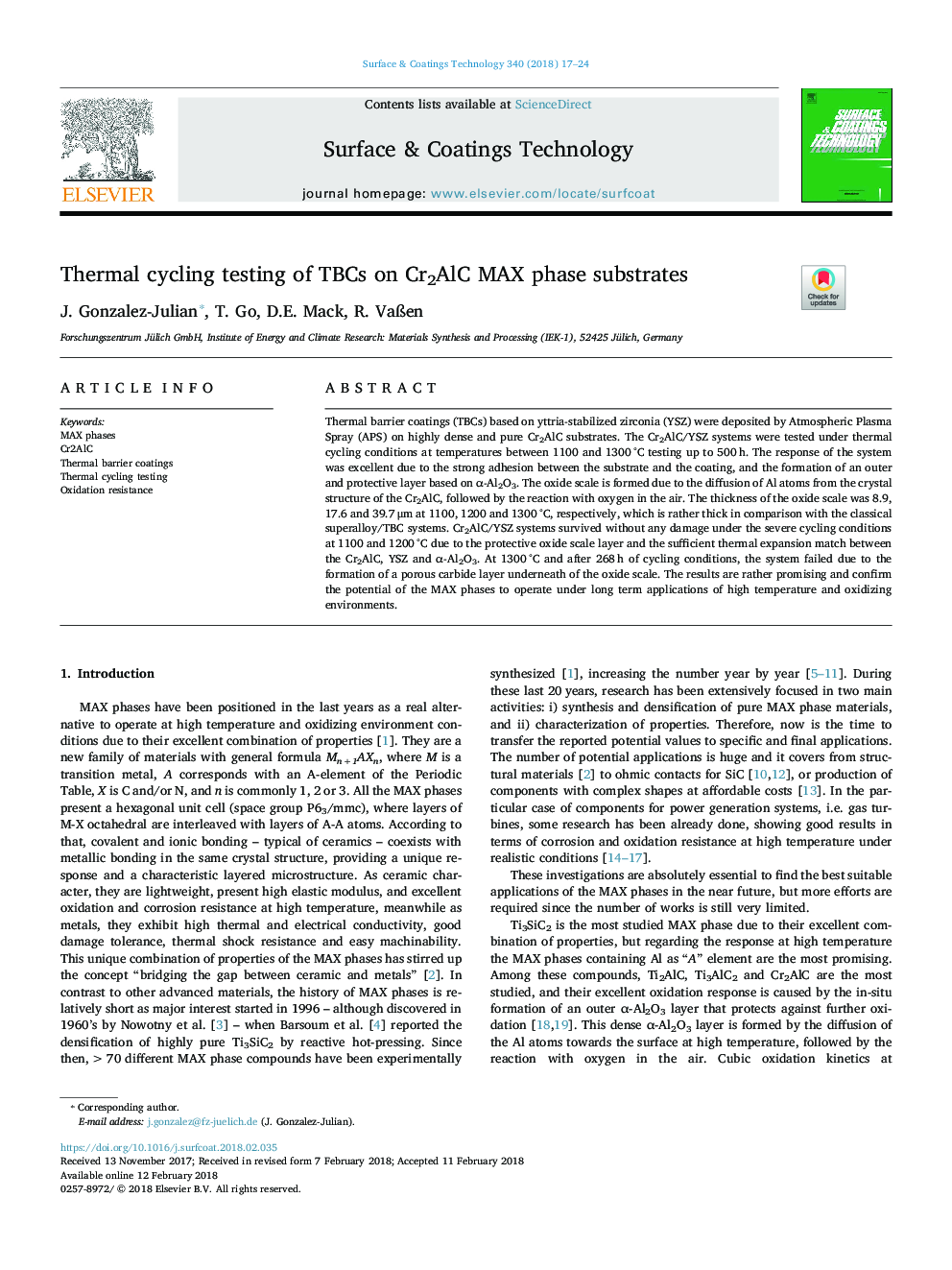| Article ID | Journal | Published Year | Pages | File Type |
|---|---|---|---|---|
| 8024038 | Surface and Coatings Technology | 2018 | 8 Pages |
Abstract
Thermal barrier coatings (TBCs) based on yttria-stabilized zirconia (YSZ) were deposited by Atmospheric Plasma Spray (APS) on highly dense and pure Cr2AlC substrates. The Cr2AlC/YSZ systems were tested under thermal cycling conditions at temperatures between 1100 and 1300â¯Â°C testing up to 500â¯h. The response of the system was excellent due to the strong adhesion between the substrate and the coating, and the formation of an outer and protective layer based on α-Al2O3. The oxide scale is formed due to the diffusion of Al atoms from the crystal structure of the Cr2AlC, followed by the reaction with oxygen in the air. The thickness of the oxide scale was 8.9, 17.6 and 39.7â¯Î¼m at 1100, 1200 and 1300â¯Â°C, respectively, which is rather thick in comparison with the classical superalloy/TBC systems. Cr2AlC/YSZ systems survived without any damage under the severe cycling conditions at 1100 and 1200â¯Â°C due to the protective oxide scale layer and the sufficient thermal expansion match between the Cr2AlC, YSZ and α-Al2O3. At 1300â¯Â°C and after 268â¯h of cycling conditions, the system failed due to the formation of a porous carbide layer underneath of the oxide scale. The results are rather promising and confirm the potential of the MAX phases to operate under long term applications of high temperature and oxidizing environments.
Related Topics
Physical Sciences and Engineering
Materials Science
Nanotechnology
Authors
J. Gonzalez-Julian, T. Go, D.E. Mack, R. VaÃen,
